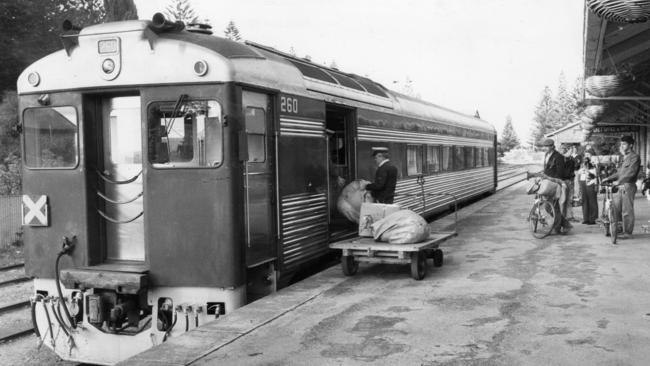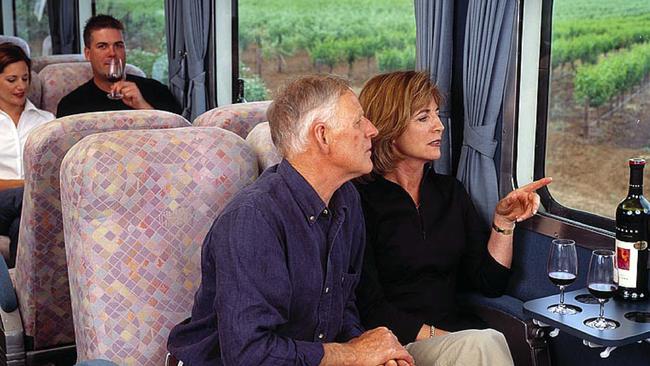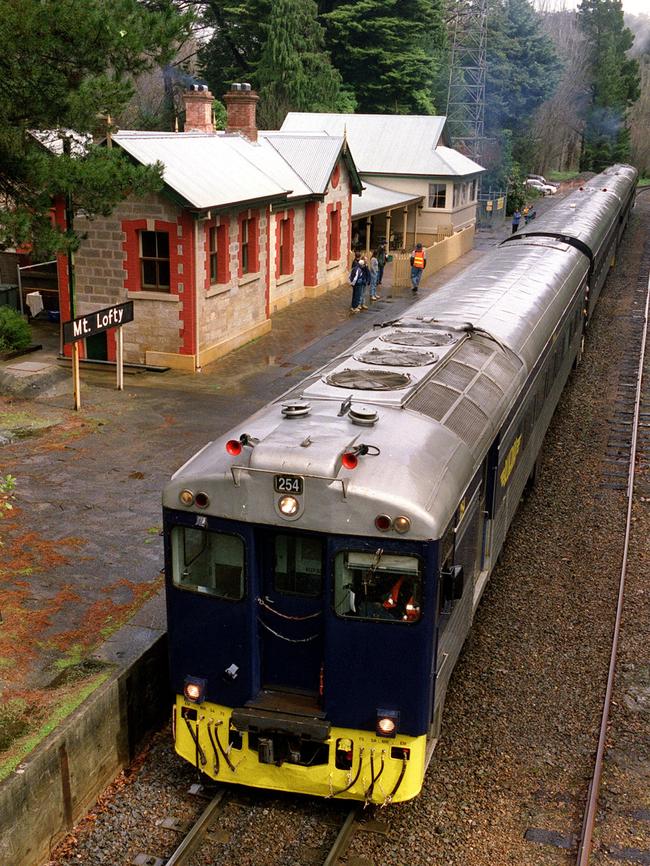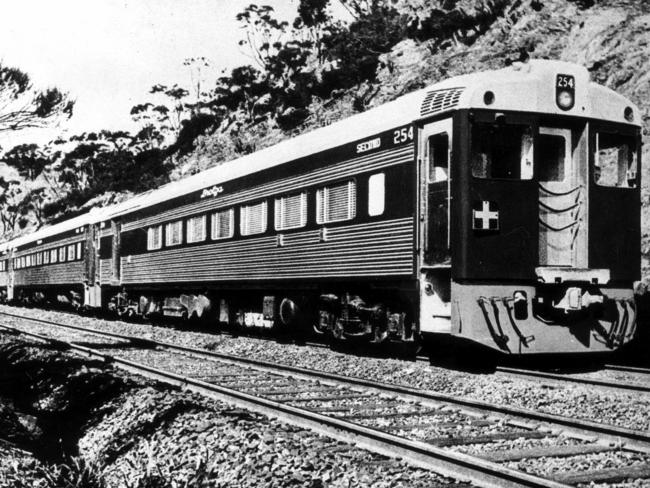The story of the SA-made Bluebird railcars
CAST aside in a national rail takeover, they were the Adelaide-made luxury passenger trains that were nearly turned into scrap metal — before they were given new life in the Barossa. Do you remember the Bluebird trains?
- The history of the mobile phone
- SA’s hidden cactus garden you’ve probably never heard of
- The life of a Boy Scout in the 1950s and 60s
- What it was like to grow up in the 50s
AT the end of 1997, a total of 11 Adelaide-built Bluebird trains – once used to transport South Australian passengers to destinations around the state – stood discarded and neglected at Islington Railway Workshops, awaiting their fate.
“They were waiting to be turned into razor blades,” laughs Barry Martin.
“They had been sold to a company in Thailand, but that business went broke, and that’s when Australian National Railways approached me to see if I was interested in buying them. So I got together with two or three partners and we bought them all.
“My dad used to drive the Bluebird to Mount Gambier when I was a boy and I’d travel with him. I just loved them, the newness, the smell, the feel and comfort of them. For the early ’50s, they were way ahead of their time!”

A year later Barry’s new company, Bluebird Rail Operations, began running the popular Barossa Wine Train from Adelaide to Tanunda through the Barossa Valley. His much loved Bluebird trains were back on the rails.
“Most of your readers from the Baby Boomer years will, I’m sure, remember the original Bluebird trains,” Barry explains.
“In those days you had to catch the train to go to the country. In the ’50s and ’60s there were very few cars around and if you wanted to get to Mt Gambier, for example, you went by train.”
It was back in the early 1950s when the South Australian Railways (SAR) decided to upgrade its country rail facilities with a modern airconditioned service and replace the ageing Brill Rail Cars and steam engines. Twenty-one Bluebirds were built in Adelaide at the local workshops over six years.

“Islington Railway Workshops employed many hundreds of tradesmen back then. They started out by building two or three power cars and a couple of trailers in 1954,” Barry recalls.
“They gradually built more and more until they had the whole set of 11 power cars plus trailers, which I believe were all made by the end of the ’50s and upgraded again in the ’60s.”
Over the next 30 years the Bluebirds became the mainstay and the very backbone of the SAR country rail service.
They travelled regularly from Adelaide to Burra, Gladstone, Moonta, Morgan, Mount Gambier, Nuriootpa, Port Pirie, Tailem Bend, Peterborough and Victor Harbor.
“It all came to a crashing end in the mid to late ’80s when SAR sold its rail tracks to the Commonwealth Government who sold them on to an American company, while the rolling stock and the passenger services were passed over to Australian National Railways, which is run out of Canberra.

“That was the death knell for the Bluebirds, as the plan from the national capital was to eventually replace all country train travel with buses.
“So the Bluebirds were mothballed at that stage and eventually purchased by a group from Thailand who planned to scrap them but ran out of money.
“So they continued to sit there, rusting away, until I was approached to see if I was interested in buying them.”
More than $1 million later, Bluebird Rail Operations launched the Barossa Wine Train in 1998.
“Buying them was the easy part. Refurbishing and upgrading and rebirthing them, that was the expensive part.”


The Barossa Bluebird was an immediate success. The business also then went on to establish regular Bluebird services to Peterborough, Broken Hill and Bordertown.
“My company managed the Barossa Wine Train until 2003 and then we sold it to another syndicate who continued to run it for several more years. It was in 2005, when the cost of insurance increased dramatically, that the train was forced to stop operating.
“It then remained idle until Chateau Tanunda owner John Geber picked it up, ran a few trains but received no support or help from the government of the day, became frustrated, banging his head against a brick wall, so, it was back to sitting in storage.”
Barry believes that there is still exciting tourism potential for a new Barossa Bluebird Wine train.
“We’re not talking a lot of money here. The South Australian Government would need to spend maybe two or three million dollars to upgrade the track; the train is ready to go right now,” he says.

“It would be the perfect day trip for the conference and cruise ship visitors. These operators are desperate for day outings to the Barossa. It could also capitalise on major events such as Barossa Under the Stars, A Day on the Green, the Barossa Vintage Festival and Gourmet Week.
“We’re waiting to see what happens with that. I doubt it will run to the Barossa though.
“I don’t think people in the State Government, either Liberal or Labor, are interested in doing the hard yards and assisting John Geber, the current owner, with help and support to get this icon up and running again, which means, sadly, it may end up in New South Wales.
“But whatever happens, those Bluebirds were truly great trains. I know it’s old technology assisted by new technology.
“The Overland is still running and that was built at the same time.
“They just built things to last. It was such good quality. They (SAR Islington Railway Workshops) even had their own leather shop. They had everything there and these cars are a real tribute to that time when South Australian Railways had a fantastic country rail service and an excellent reputation throughout Australia.”
Bob Byrne is the author of Adelaide Remember When and posts memories of Adelaide every day on facebook.com/adelaiderememberwhen/
